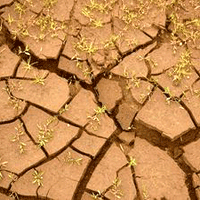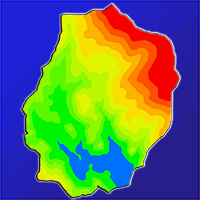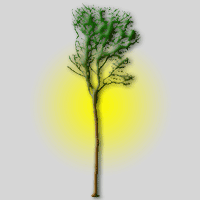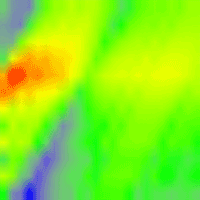
Role of photosynthesis and stomatal conductance on the long-term rising of intrinsic water use efficiency in dominant trees in three old-growth forests in Bosnia-Herzegovina and Montenegro
Chiara Palandrani (1-2) , Renzo Motta (3), Paolo Cherubini (4-5), Milic Curović (6), Vojislav Dukić (7), Giustino Tonon (8), Christian Ceccon (8), Alessandro Peressotti (2), Giorgio Alberti (2-9)
iForest - Biogeosciences and Forestry, Volume 14, Issue 1, Pages 53-60 (2021)
doi: https://doi.org/10.3832/ifor3414-013
Published: Jan 28, 2021 - Copyright © 2021 SISEF
Research Articles
Abstract
Old-growth forests have an important role in maintaining animal and plant diversity, are important carbon (C) reservoirs and are privileged sites to study long-term plant physiological responses, long-term forest dynamics and climate change impact on forest ecosystems. Several studies have highlighted how old-living trees undergo age-related declines with hydraulic limitations and reduction in photosynthesis, though some recent works have suggested that such a decline is not always observed. Our study aims at understanding the role of atmospheric CO2 increase on tree C uptake and stomatal conductance (gs) in old-living trees by analysing the long-term patterns of tree growth and intrinsic water use efficiency (iWUE) in three old-growth forests in the Balkans (Bosnia-Herzegovina and Montenegro), using dendrochronology and isotopic analysis. We hypothesised a long-term increase in iWUE in the studied old-growth forests, mostly related to enhanced photosynthesis rather than reduced stomatal conductance. Tree cores were sampled from dominant silver fir (Abies alba Mill.) trees in each forest. Tree-ring widths were measured and basal area increments (BAI) were assessed for each sampled tree and, from the six longest chronologies, five decades were chosen for cellulose extraction, its isotopic analysis (δ13C, δ18O), iWUE and leaf water 18O evaporative enrichment above the source water (Δ18OL) determination. We observed a continuous and significant increase in iWUE from 1800 to 2010 in the sampled dominant trees at all the three old-growth forests. Our BAI data and our estimates of Δ18OL across the study period support the idea that enhanced photosynthesis rather than reduced stomatal conductance is the major driver of the measured iWUE increase. Thus, our results support some recent findings challenging the hypothesis that iWUE in forests is primarily the result of a CO2-induced reduction in stomatal conductance as well as the so called hydraulic limitation hypothesis.
Keywords
Old-growth Forests, Intrinsic Water-Use Efficiency (iWUE), Basal Area Increment, Stable C Isotopes, Atmospheric CO2 Increase
Authors’ Info
Authors’ address
Department of Life Sciences, University of Trieste, v. Weiss 2, I-34128 Trieste (Italy)
Alessandro Peressotti 0000-0001-8804-7935
Giorgio Alberti 0000-0003-2422-3009
Department of Agricultural, Food, Environmental and Animal Sciences, University of Udine, v.le delle Scienze 206, I-33100 Udine (Italy)
Department of Agriculture, Forestry and Food Sciences, University of Turin, l.go Paolo Braccini 2, I-10095 Grugliasco, TO (Italy)
WSL Swiss Federal Research Institute, CH-8903 Birmensdorf, (Switzerland)
Faculty of Forestry, University of British Columbia, Vancouver BC (Canada)
University of Montenegro, Biotechnical Faculty, Mihaila Lalica 1, Podgorica (Montenegro)
Faculty of Forestry, University of Banja Luka, Bulevar vojvode Stepe Stepanovica 75 a, 78000 Banja Luka (Bosnia and Herzegovina)
Christian Ceccon
Faculty of Science and Technology, Libera Università di Bolzano, I-39100 Bolzano (Italy)
Corresponding author
Paper Info
Citation
Palandrani C, Motta R, Cherubini P, Curović M, Dukić V, Tonon G, Ceccon C, Peressotti A, Alberti G (2021). Role of photosynthesis and stomatal conductance on the long-term rising of intrinsic water use efficiency in dominant trees in three old-growth forests in Bosnia-Herzegovina and Montenegro. iForest 14: 53-60. - doi: 10.3832/ifor3414-013
Academic Editor
Rossella Guerrieri
Paper history
Received: Mar 27, 2020
Accepted: Nov 30, 2020
First online: Jan 28, 2021
Publication Date: Feb 28, 2021
Publication Time: 1.97 months
Copyright Information
© SISEF - The Italian Society of Silviculture and Forest Ecology 2021
Open Access
This article is distributed under the terms of the Creative Commons Attribution-Non Commercial 4.0 International (https://creativecommons.org/licenses/by-nc/4.0/), which permits unrestricted use, distribution, and reproduction in any medium, provided you give appropriate credit to the original author(s) and the source, provide a link to the Creative Commons license, and indicate if changes were made.
Web Metrics
Breakdown by View Type
Article Usage
Total Article Views: 38217
(from publication date up to now)
Breakdown by View Type
HTML Page Views: 31577
Abstract Page Views: 3158
PDF Downloads: 2839
Citation/Reference Downloads: 5
XML Downloads: 638
Web Metrics
Days since publication: 1803
Overall contacts: 38217
Avg. contacts per week: 148.37
Citation Metrics
Article Citations
Article citations are based on data periodically collected from the Clarivate Web of Science web site
(last update: Mar 2025)
Total number of cites (since 2021): 5
Average cites per year: 1.00
Publication Metrics
by Dimensions ©
Articles citing this article
List of the papers citing this article based on CrossRef Cited-by.
References
A global overview of drought and heat-induced tree mortality reveals emerging climate change risks for forests. Forest Ecology and Management 259 (4): 660-684.
CrossRef | Gscholar
Elevated CO2 increases tree-level intrinsic water-use efficiency: insights from carbon and oxygen isotope analyses in tree rings across three forest FACE sites. New Phytologist 197 (2): 544-554.
CrossRef | Gscholar
Contrasting effects of environmental change on the radial growth of co-occurring beech and fir trees across Europe. Science of The Total Environment 615: 1460-1469.
CrossRef | Gscholar
Introduction: water use in relation to productivity. In: “Stable Isotopes and Plant Carbon-Water Relations” (Ehleringer JR, Hall AE, Farquhar GD eds). Academic Press, New York, USA, pp. 3-8.
Gscholar
Water-use efficiency and transpiration across European forests during the Anthropocene. Nature Climate Change 5 (6): 579-583.
CrossRef | Gscholar
Disentangling the role of photosynthesis and stomatal conductance on rising forest water-use efficiency. Proceedings of the National Academy of Sciences USA 116: 16909-16914.
CrossRef | Gscholar
Climate change 2014: synthesis report. Contribution of Working Groups I, II and III to the Fifth Assessment Report of the Intergovernmental Panel on Climate Change (Core Writing Team, Pachauri RK, Meyer LA eds). IPCC, Geneva, Switzerland, pp. 151.
Gscholar
Summary for policymakers. In: “Global warming of 1.5 °C” (Masson-Delmotte V, Zhai P, Pörtner HO, Roberts D, Skea J, Shukla PR, Pirani A, Moufouma-Okia W, Péan C, Pidcock R, Connors S, Matthews JBR, Chen J, Zhou X, Gomis MI, Lonnoy E, Maycock T, Tignor M, Waterfield T eds). World Meteorological Organization, Geneva, Switzerland, pp. 32.
Gscholar
Increasing carbon storage in intact African tropical forests. Nature 457: 1003-1006.
CrossRef | Gscholar
Climate change and European forests: what do we now, what are the uncertainties, and what are the implications for forest management? Journal of Environmental Management 146: 69-83.
CrossRef | Gscholar
The human footprint in the carbon cycle of temperate and boreal forests. Nature 447: 849-851.
CrossRef | Gscholar
Toward a definition of the range of variability of central European mixed Fagus-Abies-Picea forests: the nearly steady-state forest of Lom (Bosnia and Herzegovina). Canadian Journal of Forest Research 41 (9): 1871-1884.
CrossRef | Gscholar
Structure, spatio-temporal dynamics and disturbance regime of the mixed beech-silver fir-Norway spruce old-growth forest of Biogradska Gora (Montenegro). Plant Biosystems 149 (6): 966-975.
CrossRef | Gscholar
Spatial variability and temporal trends in water-use efficiency of European forests. Global Change Biology 20 (12): 3700-3712.
CrossRef | Gscholar
Rate of tree carbon accumulation increases continuously with tree size. Nature 507: 90-93.
CrossRef | Gscholar
Long-term variation of tree growth and intrinsic water-use efficiency in Schrenk spruce with increasing CO2 concentration and climate warming in the western Tianshan Mountains, China. Acta Physiologiae Plantarum 37 (8): 660.
CrossRef | Gscholar

















